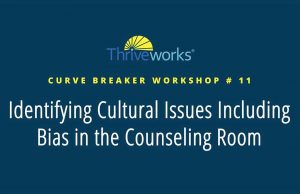
- A range of techniques used in emotionally focused therapy help couples (and others) to better understand each other and address issues in their relationship.
- An emotionally focused therapist, Jennine Estes, identifies her favorite techniques: leaning in, repeating, joint roadmaps, and organization.
- To make her clients feel more comfortable in opening up about how they’re feeling, Estes leans in closer and slows everything down.
- She also repeats what her clients have communicated to her (or engages in empathic responding), so as to clarify what they’re feeling for both them and herself.
- Estes also maps out what her clients’ goals are and makes sure they’re on the same page to make for an effective therapy journey.
- Finally, Estes organizes and explains what is taking place in therapy so that her clients understand the transformation they’re undergoing and the positive changes they’re making.
Emotionally focused therapy is aimed at helping couples address relationship issues. The techniques used help individuals to better understand their emotions, as well as their partner’s. Additionally, these techniques can be used in other forms of therapy (such as family therapy) to help individuals address issues with other significant people in their life.
Jennine Estes is a licensed marriage and family therapist and the owner of two group practices, Mission Valley and Oceanside. Here are her thoughts on her favorite counseling techniques, which prove particularly effective in emotionally focused therapy:
1) Lean in.
First, Estes helps her clients tap into their emotions and feel more comfortable opening up, simply by leaning in. “When I need to access a vulnerable emotion and make it explicit, I literally lean in closer to the client,” she explains. “As a certified Emotionally Focused Therapist, this technique helps clients feel more of the underlying emotion and it becomes visible in the room. I typically use this technique when I am working with couples who often talk from a blaming or defensive stance. By leaning in and slowing down, it helps access a more vulnerable emotion where their partner can see them and become more compassionate.”
2) Repeat.
She also practices empathic responding (or active listening), where she repeats what her clients have communicated to her in terms of how they feel and why. This allows her to best understand her clients and her clients to best understand themselves: “I will repeat what my clients share so I can make sure I am attuned to them emotionally and to help them feel more of what they are saying. This will not only help organize what is going on for the couple, but it helps them understand their patterns in a clearer way.”
3) Roadmap.
Additionally, Estes sees the importance in having a clear, joint roadmap with her clients. In other words, she makes sure they’re on the same page and actively participating in therapy as a treatment process: “I use Emotionally Focused Therapy to help me stay on track and have a roadmap of my work with my couples therapy. Not only do I use my understanding of secure relationships to help with couples therapy, I also have my clients share their goals and be a part of the treatment process. The more we have a joint roadmap, the more effective the counseling.”
4) Organize.
Finally, Estes helps her clients understand the transformations they’re undergoing in therapy. She does this by engaging different parts of the brain and then organizing and explaining what has just occurred to them. “I make sure to use both right brain and left brain in the counseling session. I do this by having the client experience the positive change and then I organize it to help them make sense of what just occurred,” she explains. “The more they experience it and make sense of it, the better chance they have to replicate it.”
Let’s keep in touch! Sign up to receive our newsletter:
Start a Relationship with An Exceptional Counselor
- Skilled and caring professional counselors
- Accepting all major and most insurances
- High-touch customer service & premium benefits
- Same- or next-day appointments
- Ultra-flexible 23.5hr cancellations













